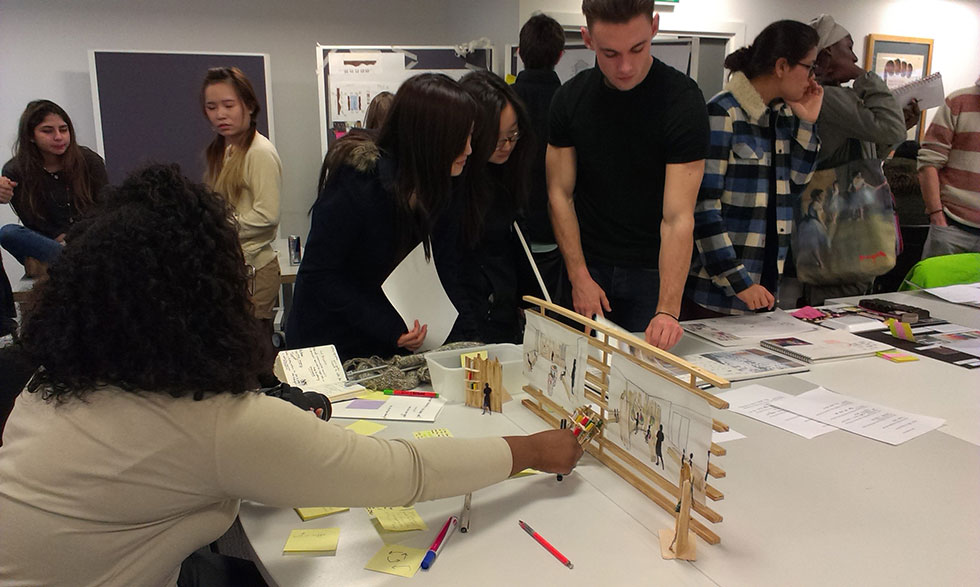Building links between communities through spaces that encourage generosity
Silvia Grimaldi

London is not only a multicultural city, but also a city that plays host to a lot of transient people. People are transient in London for different reasons. There is a very high student population, who come to London for 3 years and then leave. There are also large amounts of people who come to London for a few years to work or study English and then go back to their home countries. Young British people move to London for studies or for work and move back to their home counties when they start families.
The state of the housing market in London also contributes to this transience. Most London areas are now too expensive for a family with two working parents on average incomes to ever dream of buying a flat. Council housing is almost impossible to obtain as most councils have thousands of families on their waiting list. So people are stuck privately renting on the standard one year contract, subject to the whim of landlords who may decide to not renew a lease or hike up the rent cost. As more and more areas of London get gentrified and more expensive, people who used to be able to afford to rent within London are driven further and further out.
‘The challenge is to build communities that are resilient enough to withstand this clash between transience and permanence within the same space and are able to cross cultural boundaries.’
This has a huge impact on the fabric of neighbourhoods. Communities are often doubting of each other’s motives, the transient private renters are seen as the agents of gentrification, while those living in council flats or own their own home are resented for the perceived privilege and stability. In addition, the cross-cultural nature of London neighbourhoods, and in particular of the transient communities, means that contact between groups becomes even more challenging as people may not know the conventions of behaviour within the community they are entering. A good example of this is international students, who may not be aware of how and when it’s appropriate (or not) to say hello to a neighbour or initiate a conversation.
The challenge is to build communities that are resilient enough to withstand this clash between transience and permanence within the same space and are able to cross cultural boundaries. Some of the points of contact between different sections of the community within a neighbourhood already happen with universal talking points: when someone gets a dog or has a baby, they immediately have something in common with a whole sub-section of the neighbourhood; the dog park, baby group or school gates become typical touch points for mixed communities to form. However, these points of contact in a busy city are few and far between. The challenge is to create more of these points of contact to encourage the formation of more solid communities. This is especially relevant in light of our current society’s focus on profit-making and the privatisation of places and spaces that used to be public and used to host public life and opportunities for contact.
‘This could start from a modification of the neighbourhood’s physical spaces, creating touch points or places for encouraging particular behaviours.’
Generosity and collaboration could be good ways to create cohesive systems for mixed transient and non-transient communities. This is said not in terms of trying to create utopian scenarios which realistically are not possible, but through design interventions trying to encourage a change of attitude in a few people within a few specific locations. These small changes in attitude in small amounts of population, whether it is two people talking to each other for the first time or someone changing the way they relate to a particular space, feeling more comfortable in it for example, might have a knock on effect when people interact with each other within neighbourhoods.
This could start from a modification of the neighbourhood’s physical spaces, creating touch points or places for encouraging particular behaviours. It could be achieved through setting up community-wide spaces for sharing (skills, objects, tips, etc), or through simply creating opportunities for friendly encounters and conversation starters woven into the urban space. Creating opportunities for play in public spaces, or creating spaces that foster common narratives, is a good way to change the mood of a space and as a consequence the mood of people passing though it or staying in it. Designing to encourage playful and meaningful social interaction within public or semi-public spaces to help foster a sense of generosity in the local community, could affect the ways in which members of those communities see each other and interact with each other.
These systems and spaces will not necessarily be universal or transferable to other neighbourhoods, but may be specific to a particular situation and a particular area. Starting on a small scale the projects may then be replicable or adaptable in other neighbourhoods or other cities.